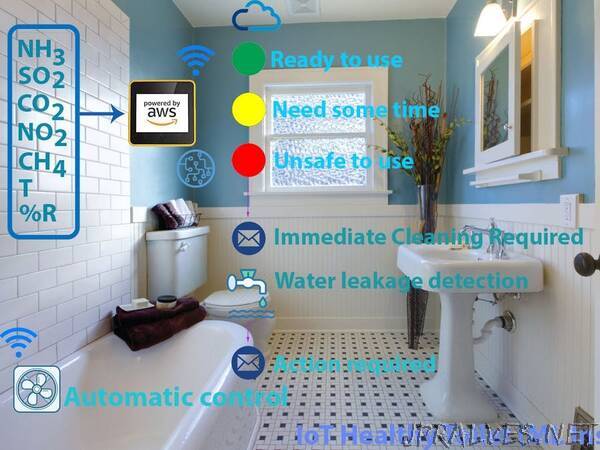
“A smart toilet that maintains a healthy environment analyzing air quality data using machine learning.
Introduction
Atmospheric conditions continue to deteriorate each year due to the growth of civilization and increasing unclean emissions from industries and automobiles. Although air is an indispensable resource for life, many people are indifferent to the severity of air pollution or have only recently recognized the problem. Among various types of pollutants such as water, soil, thermal, and noise, air pollution is the most dangerous and severe, causing climate change and life-threatening diseases. According to the World Health Organization (WHO), 90 percent of the population now breathes polluted air, and air pollution is the cause of death for 7 million people every year. The health effects of pollution are very severe that cause stroke, lung cancer, and heart disease. Furthermore, air pollutants have a negative impact on humans and the earth’s ecosystem.
According to the United States Environmental Protection Agency (EPA), indoor air is 100 times more contaminated than outside air. Most modern populations spend 80 to 90 percent of their time indoors; in this COVID-19 pandemic, the rate is even higher and the situation is the same for all the people around the world. Therefore, indoor air has a greater direct impact on human health than outside air. Moreover, in contrast to atmospheric pollution, indoor pollutants are about 1000 times more likely to be transmitted to the lungs, causing diseases such as sick building syndrome, multiple chemical sensitivities, and dizziness.
A toilet is one of the public facilities, which is frequently used by people and located indoor. Therefore, maintaining good air quality in toilets is essential in order to keep them hygienic and sanitary. This is aligned with the statement mentioned by Wilke, ”In order to create a healthier and safer environment, the first step is in the washroom.” A toilet that has terrible air quality can be an ideal place for microbes, airborne bacteria, and recently added COVID-19 to disseminate.
My Healthy Toilet Project and the Motivation
Insufficient ventilation, a high influx of people, and improper management of public toilets are the main sources of indoor air contamination in public toilets. To reduce exposure to air contamination, new measures can be taken, including the development of air quality measuring devices, continuous monitoring of the air quality data, and taking necessary steps based on the data.
Internet of Things (IoT) and cloud computing have revealed new capabilities of real-time monitoring in various fields. Since the technologies feature a wireless sensor network to automatically transmit, process, analyze, and visualize data, merging these new technologies can also offergreat advantages to improve indoor air quality.
User’s satisfaction in using the restrooms must be measured to have proper management in the toilet. Normally, a toilet is cleaned at a fixed interval but sometimes a toilet needs cleaning even if it is not yet the cleaning schedule because it gives discomfort to the users. Analyzing air quality data, this situation can be detected when a toilet required cleaning.
Ventilation can increase comfort and improves indoor air quality (IAQ) by reducing the concentrations of indoor air pollutants and viruses like COVID-19. But electrical power consumption is involved with the ventilation and efficient and intelligent operation is required to save energy.
This project is significant because it helps to maintain the cleanliness and excellent air quality in public/private toilets by notifying the toilet attendants or owner when it is time for cleaning. It also intelligently operates the exhaust fan based on the air quality data to maintain a comfortable environment inside the toilet keeping energy consumption minimum. Cloud-based machine learning is used to analyze data and take decisions.”
